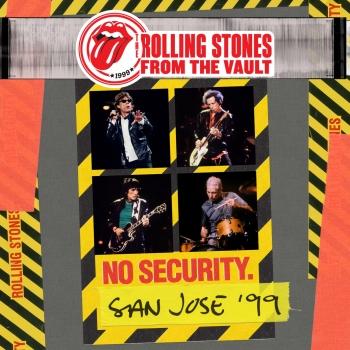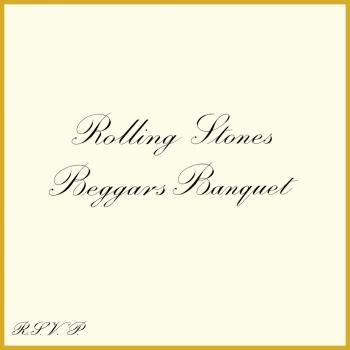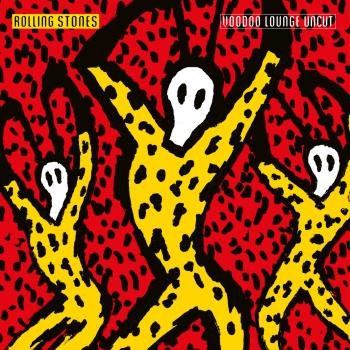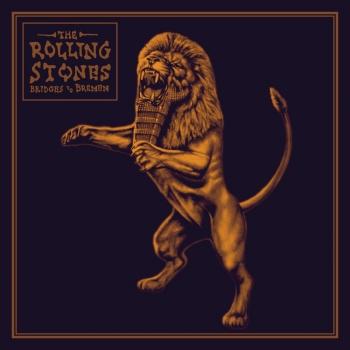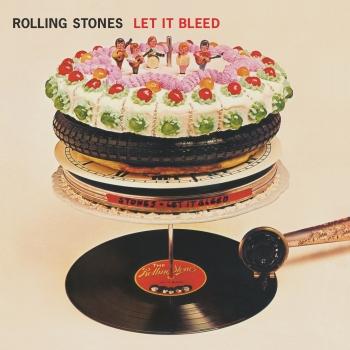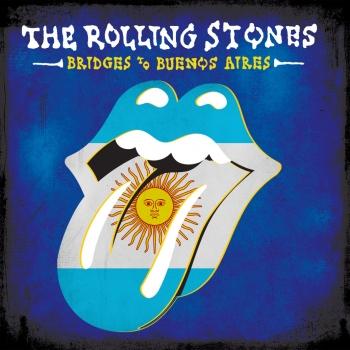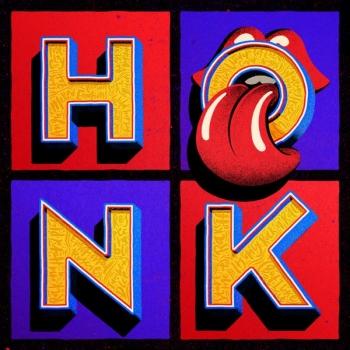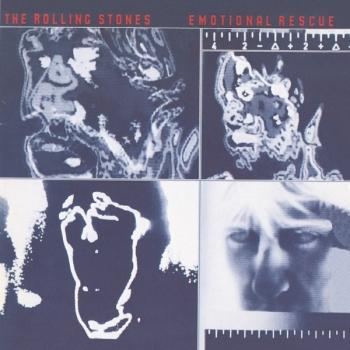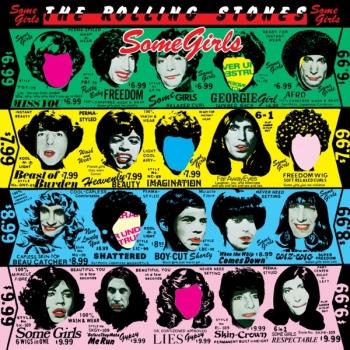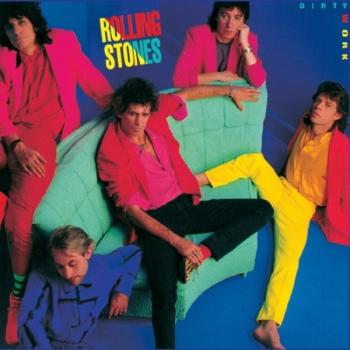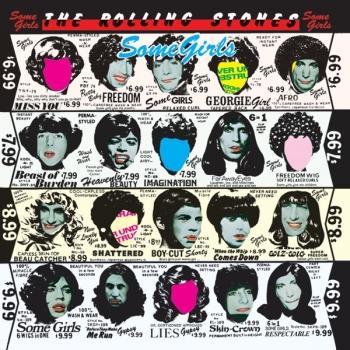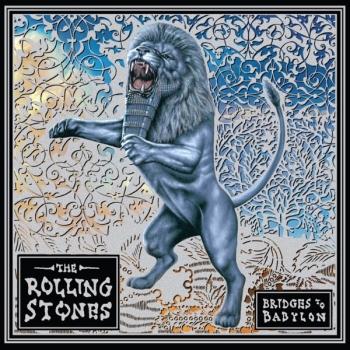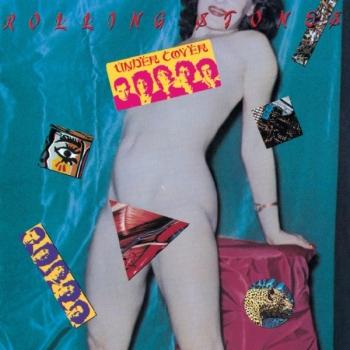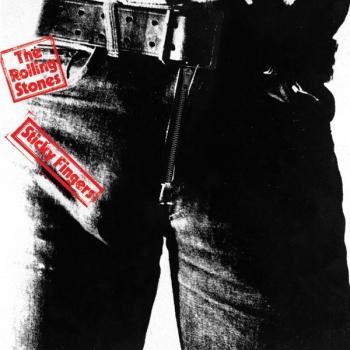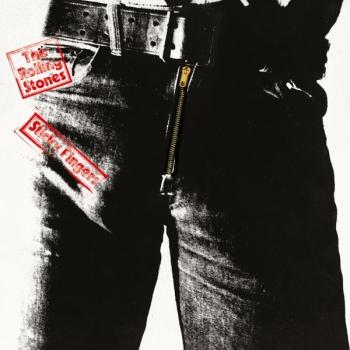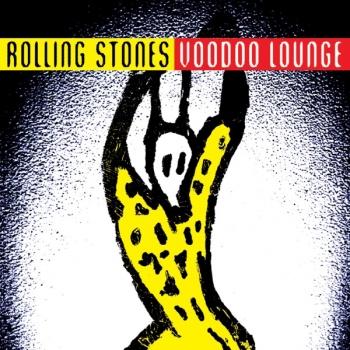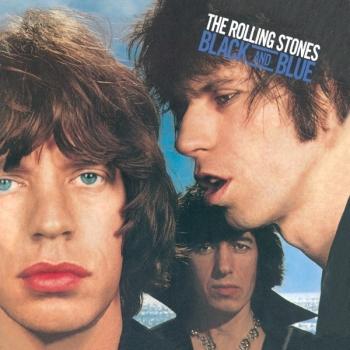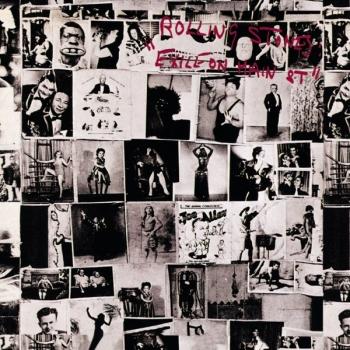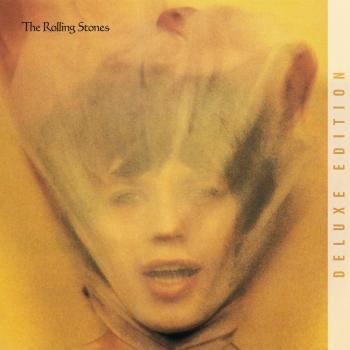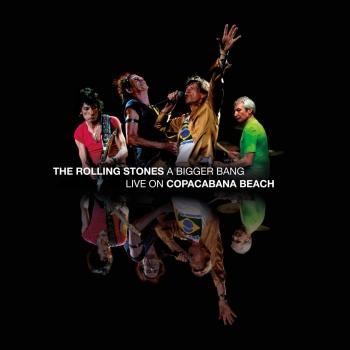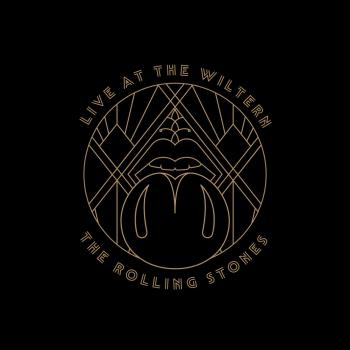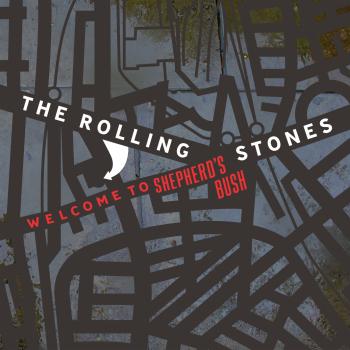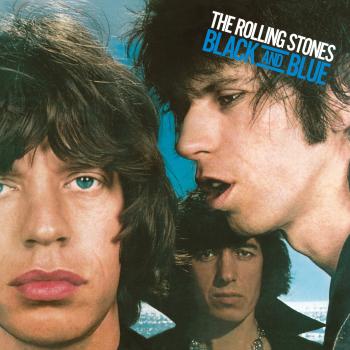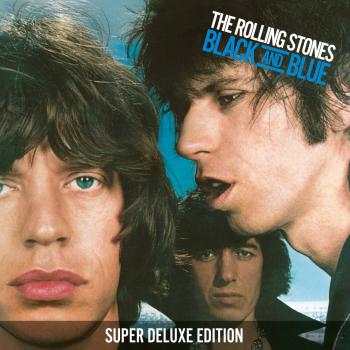
Tattoo You (Remastered 2021) The Rolling Stones
Album info
Album-Release:
2021
HRA-Release:
22.10.2021
Album including Album cover
I`m sorry!
Dear HIGHRESAUDIO Visitor,
due to territorial constraints and also different releases dates in each country you currently can`t purchase this album. We are updating our release dates twice a week. So, please feel free to check from time-to-time, if the album is available for your country.
We suggest, that you bookmark the album and use our Short List function.
Thank you for your understanding and patience.
Yours sincerely, HIGHRESAUDIO
- 1 Start Me Up (Remastered 2021) 03:31
- 2 Hang Fire (Remastered 2021) 02:20
- 3 Slave (Remastered 2021) 06:34
- 4 Little T&A (Remastered 2021) 03:23
- 5 Black Limousine (Remastered 2021) 03:31
- 6 Neighbours (Remastered 2021) 03:30
- 7 Worried About You (Remastered 2021) 05:16
- 8 Tops (Remastered 2021) 03:45
- 9 Heaven (Remastered 2021) 04:21
- 10 No Use In Crying (Remastered 2021) 03:24
- 11 Waiting On A Friend (Remastered 2021) 04:35
Info for Tattoo You (Remastered 2021)
40 years after it’s original release, Tattoo You returns with an all-new 2021 master. Tattoo You is the 16th British and 18th American studio album by the English rock band the Rolling Stones, released on 24 August 1981 by Rolling Stones Records. The album is mostly composed of studio outtakes recorded during the 1970s, and contains one of the band's most well-known songs, "Start Me Up", which hit number two on the US Billboard singles charts.
In the wake of the release of Emotional Rescue in 1980, the future of the Rolling Stones seemed in the balance. Sure, they’d survived the wild 1960s and even wilder ’70s, but as the new decade dawned, they were in uncharted territory. No rock and roll band had lasted nearly 20 years. Still, plans were afoot.
With preparations proceeding for a massive tour of the United States at the end of 1981 and another the following year in Europe, a new album was urgently required. But the band’s future was anything but certain. Reflecting on the relationships between the various Stones during the Tattoo You period, Mick says, ‘The difficulty in growing up in a rock and roll band, I think, is that you start with this gang of people and, as anyone knows that’s been in a gang, that gang simply can’t last forever.’
The Stones, however, were determined to carry on. With everyone on a much-needed break after the completion of Emotional Rescue, but with an album owed to the powers that be, the band hit on a novel approach to make it. Chris Kimsey – a veteran of Stones sessions – relates how he knew that some of the band’s outtakes from the 1970s had the potential to be powerful masters. He was tasked with uncovering the best of whatever might be buried in the band’s rich archive.
‘For Tattoo You,’ recalls Ron Wood, ‘we realised that there was a lot of great music that we had recorded in the past that had never been released, particularly from all the material we had amassed during the Some Girls and Emotional Rescue sessions’.
‘The music had to age like good wine,’ Keith adds with a chuckle.
Diligently, Kimsey set about his work. For three months he toiled, listening to every reel of tape he could lay his hands on that had rolled during a Stones session in the 1970s. Every step of the way, the band were involved.
Not surprisingly, it was the Paris session material for Emotional Rescue and, especially, Some Girls – when Keith Richards was living under the threat of spending time in jail after his February 1977 drug bust in Toronto, Canada – that turned out to be a boon for the team. Describing his drive and focus at that time, Keith says, ‘When I returned to the fold after “closing down the laboratory”, I came back into the studio with Mick and the band to say, “Thanks, man, for shouldering the burden.”’
Eventually, Kimsey had found enough great songs for an album. He sent another set of cassettes of rough mixes to Mick and Keith and waited for their responses. They loved what they heard and were convinced an extraordinarily strong and, considering its disparate sources, remarkably cohesive album was within their grasp.
In the autumn of 1980, Mick met up with Kimsey in a suburb of Paris. In a damp, cavernous warehouse, with the Rolling Stones Mobile truck parked inside, they began working in earnest on what would eventually become Tattoo You. After several months of recording, Mick then convened with Keith in New York to add the finishing touches to the album. Finally, to put the project to bed, the masterful mix by Bob Clearmountain and Gary Lyons made tracks taken from so many unrelated sources sound unified.
Mick Jagger, lead vocals (all but 4), backing vocals (all but 5); electric guitar (9 & 10); percussion (track 9)
Keith Richards, electric guitar (all but 9), backing vocals (1–4, 6, 7 & 10); lead vocals and bass guitar (track 4)
Ronnie Wood, electric guitar (all but 3, 7–9 & 11), backing vocals (1, 2, 4, 6 & 10)
Bill Wyman, bass (all but 4); guitars, synthesizer and percussion (track 9)
Charlie Watts, drums
Mick Taylor, electric guitar (8 & 11)
Additional musicians:
Nicky Hopkins, piano (8, 10 & 11); organ (10)
Ian Stewart, piano (2 & 4–6)
Billy Preston, keyboards (3 & 7)
Wayne Perkins, electric lead guitar (7)
Ollie E. Brown, percussion (3 & 7)
Pete Townshend, backing vocals (3)
Sonny Rollins, saxophone (3, 6 & 11)
Jimmy Miller, percussion (8)
Michael Carabello, cowbell (1); conga (3); güiro, claves, cabasa and conga (11)
Chris Kimsey, electric piano (9)
Barry Sage, handclaps (1)
Sugar Blue, harmonica (5)
Produced by The Glimmer Twins
Digitally remastered
The Rolling Stones
It's hard to overestimate the importance of the Rolling Stones in rock & roll history. The group, which formed in London in 1962, distilled so much of the music that had come before it and has exerted a decisive influence on so much that has come after. Only a handful of musicians in any genre achieve that stature, and the Stones stand proudly among them.
Every album the group released through the early Seventies - from The Rolling Stones in 1964 to Exile on Main Street in 1972 -- is essential not simply to an understanding of the music of that era, but to an understanding of the era itself. In their intense interest in blues and R&B, the Stones connected a young American audience to music that was unknown to the vast majority of white Americans. Though the Stones were not overtly political in their early years, their obsession with African American music - from Robert Johnson, Muddy Waters and Howlin' Wolf to Chuck Berry, Marvin Gaye and Don Covay - struck a chord that resonated with the goals of the civil rights movement. If the Stones had never made an album after 1965 they would still be legendary.
Soon, of course, the Stones - singer Mick Jagger, guitarists Keith Richards and Brian Jones, bassist Bill Wyman and drummer Charlie Watts, in those days - became synonymous with the rebellious attitude of that era. Songs like '(I Can't Get No) Satisfaction,' 'Street Fighting Man,' 'Sympathy for the Devil' and 'Gimme Shelter' captured the violence, frustration and chaos of that era. For the Stones, the Sixties were not a time of peace and love; in many ways, the band found psychedelia and wide-eyed utopianism confusing and silly. The Stones always were - and continue to be - tough pragmatists. Against the endless promises of Sixties idealism the Stones understood that 'You Can't Always Get What You Want.' You simply want to Let It Be? Why not Let It Bleed?
For those reasons, as the Sixties drained into the Seventies, the Stones went on a creative run that rivals any in popular music. Beggars Banquet (1968), Let It Bleed (1969), Sticky Fingers (1971) and Exile on Main Street (1972) routinely turn up on lists of the greatest albums of all time, and deservedly so. All done with American producer Jimmy Miller - 'in incredible rhythm man,' in Richards' terse description - those records shake like the culture itself was shaking. As the Stones were working on Let It Bleed, Brian Jones died, and the band replaced him with Mick Taylor, a guitarist whose lyricism and melodic flair counterbalanced Richards' insistent, irreducible rhythmic drive, adding an element to the band's sound that hadn't been there before, and opening fertile new musical directions.
After that, the Stones were an indomitable force on the music scene, and they have continued to be to this day. In 1978, the band's album, Some Girls, rose to the challenge of punk ('When the Whip Comes Down') - whose energy and attitude the Stones had defined a decade earlier - but also swung with the sinuous grooves of disco ('Miss You'). The album is one of the best of that decade. Meanwhile, guitarist Ron Wood had replaced Mick Taylor in 1975, adding another key element to the version of the Rolling Stones that would last another three decades - and counting.
Tattoo You (1981) added the classics 'Start Me Up' and 'Waiting on a Friend' to the Stones' repertoire, and took its prominent place among the Stones' most compelling - and most popular - later albums. Possibly the most underrated album of the Stones' career, Dirty Work finds the band at its rawest and most rhythmically charged, a reflection of the tumult within the band when it was recorded. True Stones fans have long worn their appreciation of Dirty Work as a hip badge of honor.
With the release of Steel Wheels in 1989, the Stones went back on the road again for the first time in seven years and inaugurated the latest phase of the band's illustrious career. They've made strong, credible new albums during this period - Voodoo Lounge (1994), Bridges to Babylon (1997) - along with the excellent live album Stripped (1995) and the fun, satisfying hits collection, Forty Licks (2002).
More significantly, though, the Stones have set a standard for live performance during this time. That is an achievement completely in accord with the band's history. When the Stones began to be introduced on their 1969 tour as 'The Greatest Rock and Roll Band in the World,' they were staking that claim on the basis of their live performances. It was almost fashionable for bands to withdraw from the road at that time - Bob Dylan and the Beatles had both done so. But the Stones set out to prove that writing brilliant songs and making powerful records did not mean that you were too lofty to get up in front of your fans and rock them until their bones rattled. The Stones' live shows - epitomized, of course, by Jagger's galvanizing erotic choreography - had earned the band its reputation in its earliest years, and that flame was being rekindled.
It was lit again twenty years later, and it's burning still. Since 1989 the Stones have toured every few years to ecstatic response. Bassist Darryl Jones, who had formerly played with Miles Davis, joined the band in 1994, replacing Bill Wyman, and the Stones turned what could have been a setback into a rejuvenating rush of new energy. The Stones' live success during this period is not a matter of dollars or box-office breakthroughs, though the band has enjoyed plenty of both. It's about demonstrating a vital, ongoing commitment to the idea that performing is what keeps a band truly alive.
And that's the critical misunderstanding of the question, 'Is this the last time?' that has been coming up every time the Stones have toured for close to forty years now. It's true that over the decades the Stones have been in the news for many reasons that have little to do with music - arrests, provocative statement, divorces, affairs, all the usual detritus of a raucous lifetime in the public eye. And there's no doubt that Mick Jagger is as famous a celebrity as the world has ever seen.
But, for all that, the Stones are best understood as musicians, and their own acceptance of that fact is what has enabled them to carry on so well for so long. For all the tabloid headlines, Mick Jagger is finally an extraordinary lead singer and one of the most riveting performers - in any genre - ever to set foot on a stage. Keith Richards is the propulsive engine that drives the Stones and makes their music instantly recognizable. Ron Wood is a guitarist who has formed a rhythmic brotherhood with Richards, but who also colors and textures the band's songs with deft, melodic touches. And Charlie Watts, needless to say, is one of rock's greatest drummers. He is both the rock that anchors the band, and the force that swings it. At once elegant in their simplicity and soaring in their impact, none of his gestures are wasted, all are necessary. He and Darryl Jones enliven the often-monolithic notion of the rock & roll rhythm section with an irresistible, unpretentious, jazz-derived sophistication.
Musicians live and create in the moment, and that's why fans still go see the Stones. Certainly there's also a catalogue of songs that only a handful of artists could rival. Surely there's also the desire to encounter a band that has played a pristine role in defining our very idea of what rock & roll is. But seeing the Rolling Stones live is to see a working band playing as hard as they can, and there's no last time for that. (Anthony DeCurtis, Source: ABKCO Music & Records, Inc. All Rights Reserved)
This album contains no booklet.












